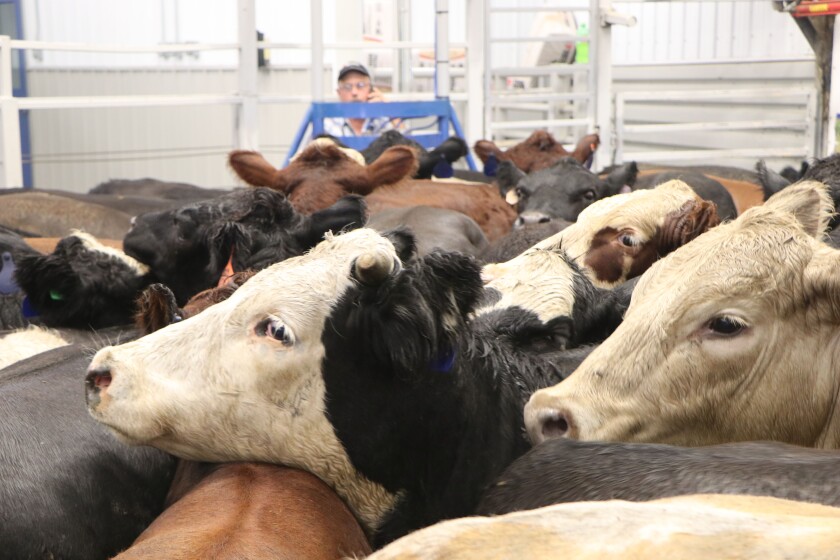Recognizing Animals Risk Security (LRP) Insurance Coverage: A Comprehensive Guide
Navigating the realm of animals danger protection (LRP) insurance policy can be a complicated endeavor for many in the farming industry. This kind of insurance supplies a safeguard versus market fluctuations and unforeseen scenarios that can influence livestock manufacturers. By comprehending the intricacies of LRP insurance coverage, manufacturers can make educated choices that may guard their operations from monetary threats. From how LRP insurance coverage works to the different insurance coverage options offered, there is much to discover in this extensive guide that might potentially shape the way animals manufacturers approach risk administration in their companies.

How LRP Insurance Functions
Periodically, recognizing the mechanics of Animals Danger Security (LRP) insurance can be intricate, however breaking down how it functions can provide clearness for ranchers and farmers. LRP insurance is a threat management tool made to safeguard livestock manufacturers against unexpected price declines. The plan enables manufacturers to set a protection level based upon their specific needs, selecting the number of head, weight array, and protection rate. As soon as the plan is in location, if market value fall listed below the coverage price, producers can file a case for the distinction. It is very important to note that LRP insurance policy is not a profits assurance; instead, it concentrates only on rate danger protection. The protection period generally ranges from 13 to 52 weeks, supplying versatility for manufacturers to choose a period that lines up with their manufacturing cycle. By utilizing LRP insurance coverage, herdsmans and farmers can reduce the financial dangers connected with varying market costs, making sure better stability in their operations.
Qualification and Protection Options

When it comes to insurance coverage choices, LRP insurance policy provides manufacturers the versatility to choose the coverage degree, protection period, and recommendations that ideal suit their danger management requirements. By understanding the eligibility criteria and coverage choices available, livestock producers can make educated decisions to handle threat efficiently.
Advantages And Disadvantages of LRP Insurance Coverage
When evaluating Animals Threat Security (LRP) insurance coverage, it is crucial for animals manufacturers to evaluate the benefits and negative aspects intrinsic in this danger management device.

One of the key benefits of LRP insurance policy is its capability to give defense against a decline in animals rates. This can assist guard producers from economic losses resulting from market fluctuations. Furthermore, LRP insurance policy provides a level of flexibility, permitting manufacturers to tailor coverage degrees and policy durations to match their specific requirements. By securing an assured cost for their animals, producers can better handle danger and prepare for the future.
One limitation of LRP insurance policy is that it does not secure versus all kinds of risks, such as disease break outs or all-natural disasters. It is vital for manufacturers to thoroughly assess their specific risk direct exposure and financial scenario to determine if LRP insurance coverage is the ideal threat management tool for their procedure.
Recognizing LRP Insurance Premiums

Tips for Taking Full Advantage Of LRP Perks
Maximizing the benefits of Animals Threat Defense (LRP) insurance policy needs strategic planning and proactive risk monitoring - Bagley Risk Management. To maximize your LRP insurance coverage, take into consideration the adhering to pointers:
Regularly Analyze Market Conditions: Remain notified regarding market trends and price variations in the animals sector. By monitoring these aspects, you can make educated choices about when to buy LRP protection to secure against prospective losses.
Establish Realistic Protection Levels: When choosing protection degrees, consider your manufacturing expenses, market price of animals, and possible dangers - Bagley Risk Read More Here Management. Setting reasonable insurance coverage levels guarantees that you are effectively protected without overpaying for unneeded insurance
Diversify Your Coverage: As opposed to relying only on LRP insurance policy, consider expanding your risk monitoring strategies. Combining LRP with other risk administration devices such as futures contracts or alternatives can give detailed coverage versus market uncertainties.
Review and Readjust Insurance Coverage Consistently: As market conditions transform, periodically examine your LRP insurance coverage to ensure it aligns with your existing risk exposure. Changing protection levels and timing of purchases can aid enhance your threat defense technique. By adhering to these tips, you can make the most of the benefits of LRP insurance coverage and protect your animals operation versus unpredicted dangers.
Verdict
Finally, livestock threat defense (LRP) insurance coverage is an important tool for farmers to manage the financial risks related to their animals operations. By comprehending just how LRP functions, qualification and coverage options, in addition to the pros and disadvantages of this insurance policy, farmers can make informed choices to protect their incomes. By meticulously thinking about LRP costs and executing techniques to maximize benefits, farmers can minimize prospective losses and ensure the sustainability of their operations.
Animals producers interested in acquiring Animals Risk Defense (LRP) insurance coverage can check out a range of qualification requirements and protection alternatives customized to their details livestock procedures.When it comes to insurance coverage choices, LRP insurance coverage provides producers the versatility to select the protection degree, insurance coverage period, and recommendations that finest match their danger administration demands.To comprehend the ins and outs of Animals Threat Protection (LRP) insurance policy fully, understanding the variables influencing LRP insurance policy premiums is vital. LRP insurance coverage costs are figured out by various components, consisting of the protection degree selected, the anticipated rate of animals view publisher site at the end of the coverage period, the type of livestock being insured, and the length of the coverage duration.Evaluation and Change Insurance Coverage Consistently: As market problems transform, occasionally examine your LRP coverage to ensure it aligns with your current danger exposure.